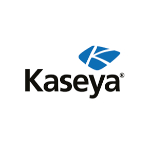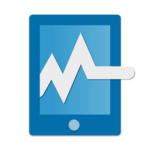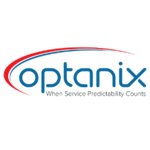List of Best IT Automation Software
Showing 10 of 40 products
ManageEngine Network Configuration Manager
Software by ManageEngine.
Network Configuration Manager is a comprehensive solution for managing network configurations holistically. With features like backup, change management, compliance management, automation, and firmware vulnerability management, it simplifies network...Read ManageEngine Network Configuration Manager Reviews

ManageEngine Endpoint Central
Endpoint Protection Software for Enterprises
ManageEngine Endpoint Central is an all-in-one solution for advanced endpoint management and security, giving full control to your enterprises IT team. It offers a holistic approach to endpoint administration and protection catering to the complexity...Read ManageEngine Endpoint Central Reviews
Atera is a software designed for modern businesses. With its intuitive interface and powerful features, Atera simplifies IT management and boosts productivity. Its innovative technology streamlines tasks, improves response time, and reduces downtime...Read Atera Reviews
BMC Software is a leading provider of innovative IT solutions for businesses of all sizes. With a focus on simplifying and streamlining processes, their software offerings empower companies to optimize their IT environments and drive digital transfor...Read BMC Software Reviews
Kaseya EMM is a mobile device management solution designed to streamline and optimize the management of mobile devices in the workplace. With Kaseya EMM, businesses can easily secure, monitor, and control a diverse range of devices, ensuring a seamle...Read Kaseya EMM Reviews
ConnectWise is a business management platform designed specifically for IT service providers. With its intuitive features and customizable modules, ConnectWise empowers companies to streamline their operations, improve efficiency, and ultimately, enh...Read ConnectWise Reviews
Zenoss is a IT monitoring and management software that takes a holistic approach to overseeing your entire technology stack. With its user-friendly interface automation, Zenoss allows businesses to proactively monitor their systems for potential issu...Read Zenoss Reviews
Pulseway is a remote monitoring and management solution designed to simplify IT management for businesses of all sizes. With its user-friendly interface and real-time notifications, managing systems and networks has never been easier. Stay on top of...Read Pulseway Reviews
Optanix provides a powerful software solution that streamlines and enhances IT operational management for businesses of all sizes. With a focus on efficiency and effectiveness, Optanix empowers companies to maximize the performance of their IT infras...Read Optanix Reviews
ActiveBatch Workload Automation is a solution that simplifies and streamlines complex business processes with ease. With its intuitive interface scheduling capabilities, ActiveBatch helps businesses of all sizes achieve greater efficiency and product...Read ActiveBatch Workload Automation Reviews
- What Is IT Automation Software?
- Top Reasons Why Businesses Need IT Automation Software?
- What Are the Top Key Features of IT Automation Software?
- What Are the Top Benefits of IT Automation Software?
- What Are the Steps to Choose the Right IT Automation Software?
- What Are the Types of IT Automation Software for Different Industries?
- What Are the Technology Trends for Best IT Automation Software?
- What Are the Deployment Options for IT Automation Software?
What Is IT Automation Software?
IT automation software refers to a computer application that has been specifically developed to streamline and automate operations that are repetitive and monotonous in nature. The process involves the utilization of a prescribed set of instructions, sometimes referred to as an algorithm, which is executed in a systematic manner to accomplish intricate activities.
This enables users to allocate their attention towards more challenging jobs or those that necessitate human involvement or creativity. The utilization of automate IT software is employed to enhance operational efficiency and minimize expenses. Additionally, it facilitates the optimization of business processes and the conservation of time.
When effectively implemented, IT Automation Software has the potential to mitigate manual errors, expedite tasks with enhanced precision, and enhance customer satisfaction. IT automation software has the capability to perform labor-intensive operations, including but not limited to data collection, report generation, and presentation creation.
The implementation of the best IT automation tools has the potential to mitigate the time-consuming nature of manual operations, enhance accuracy and quality, and facilitate the optimization of customer connections. By implementing automation in manual procedures, businesses have the potential to achieve cost savings and enhance customer service.
top IT automation tools are frequently employed to enhance operational efficiency and mitigate the occurrence of human errors, hence leading to enhanced levels of customer satisfaction. In summary, IT Automation Software serves as a substitute for manual and labor-intensive operations by implementing automated procedures that enhance efficiency and precision, resulting in faster task completion.
Top Reasons Why Businesses Need IT Automation Software?
1. Improved accuracy: The utilization of the best IT automation software has been shown to reduce errors in comparison to human operations, hence leading to enhanced precision in data.
2. Improved efficiency: The utilization of IT Automation Software has the potential to expedite processes and workflows, hence enhancing overall efficiency and facilitating cost reduction.
3. Increased scalability: The implementation of IT automation software provides organizations with supplementary resources to effectively manage the growth of their operations and meet the increasing needs of their customers.
4. Increased customer satisfaction: Automated systems facilitate expedient responses to consumer inquiries within firms, hence fostering enhanced levels of customer satisfaction.
5. Enhanced data security: The utilization of top IT automation tools enables the safeguarding of critical data through the implementation of the most stringent security measures available.
6. Reduced employee workload: Automation has the potential to assist organizations in mitigating the workload of their staff by reducing manual processes, hence creating opportunities for the allocation of time towards other duties.
7. Reduced operational costs: Automation has the potential to effectively mitigate operating expenses for firms by minimizing the need for a large workforce dedicated to manual activities.
8. Improved data management: The utilization of this software has the potential to enhance data organization and effectiveness within enterprises.
9. Fewer human errors: The implementation of it has the potential to mitigate errors resulting from human fallibility, hence instilling a sense of trust and assurance in customers.
10. Enhanced customer privacy: Automation has the potential to safeguard clients' personal information and data by adhering to stringent privacy rules.
11. Automated processes and reports: The utilization of IT automation software companies facilitates the expeditious generation of reports, resulting in significant time and cost savings for enterprises.
12. Increased competitiveness: The utilization of IT business automation software can provide firms with a competitive advantage by allowing them to proactively adapt to market dynamics and outpace their rivals in terms of responsiveness.
13. Compliance: The utilization of IT operations automation tools has the potential to assist firms in adhering to industry norms and legal requirements.
14. Improved decision-making: Automation has the potential to enhance decision-making processes inside firms, facilitating the adoption of optimal strategies and enabling the attainment of informed choices.
15. Streamlined processes: The utilization of the best IT automation tools has the potential to optimize internal processes and workflows, hence enhancing business efficiency.
What Are the Top Key Features of IT Automation Software?
The primary essential characteristics of the best IT automation software encompass
1. Automation Task Deployment: The inclusion of an automation task deployment function enables users to rapidly and effectively launch several jobs, while minimizing the need for manual involvement. The implementation of this approach has the potential to yield significant time, energy, and resource savings for information technology workers.
2. Orchestration and Scheduling: The inclusion of an orchestration and scheduling capability enables users to create workflows and automate their execution at certain intervals. This phenomenon leads to a decrease in the necessity for manual interventions and a corresponding gain in operational efficiency.
3. Process Automation: IT automation software provides users with the capability to generate and deploy executable files that streamline routine procedures. The implementation of this approach decreases the necessity for manual interventions and enhances operational efficiency.
4. Workflow Orchestration: This functionality allows users to establish connections between various tasks that are connected and construct a comprehensive workflow. This approach aids in minimizing the need for manual intervention and enhancing the attainment of automation objectives.
5. Notification and Alerts Management: The utilization of IT operations automation tools empowers customers to customize alerts and notifications according to their own requirements. This facilitates the acquisition of timely information by IT teams, enabling them to promptly respond to any incidents.
6. Reports and Dashboards: Typically, an information technology automation program is equipped with functionalities pertaining to reporting and dashboard features. This feature enables users to actively track and analyze analytics, performance metrics, and usage data in real time.
What Are the Top Benefits of IT Automation Software?
1. Increased Efficiency: The use of IT Automation Software has the potential to enhance operational efficiency through the automation of repetitive operations and the optimization of processes, resulting in a reduction in the reliance on manual labor.
2. Cost Savings: The use of automate It software has the potential to generate cost savings for enterprises through the elimination of expensive manual labor and resources, resulting in a reduction in overall operating expenditures.
3. Improved Accuracy: The implementation of IT business automation software has the potential to enhance process and task accuracy by mitigating the occurrence of human errors.
4. Increased Productivity: The utilization of IT Automation Software has the potential to enhance efficiency within enterprises by automating intricate procedures and tasks.
5. Improved Data Quality: The implementation of the best IT automation tools has the potential to enhance data quality within enterprises by facilitating the precise capture, storage, and analysis of data.
6. Better Compliance: The utilization of the best IT automation software has the potential to enhance adherence to norms and processes under its ability to precisely adhere to established rules and standards.
7. Improved Customer Experience: The utilization of IT Automation Software has the potential to enhance the overall customer experience by facilitating prompt and precise responses, hence contributing to an increased level of customer satisfaction.
8. Enhanced Decision-Making: The utilization of top IT automation tools has the potential to furnish firms with valuable insights and facilitate data-driven decision-making processes, hence augmenting the effectiveness of strategic choices.
What Are the Steps to Choose the Right IT Automation Software?
1. Initially, it is necessary to do a thorough evaluation of one's requirements, encompassing both present and prospective circumstances. Currently, it is imperative to identify the specific domains within IT automation that require immediate attention.
Additionally, it is essential to forecast the forthcoming sectors that will necessitate automation in the near future.
2. Conduct a comprehensive investigation of several software options presently accessible in the market, then refining the selection based on the needed functionality and budgetary considerations.
3. Examine the software's ratings and evaluations in order to assess its use by others and appraise its merits and limitations.
4. Once you have conducted a preliminary selection, it is advisable to initiate contact with the software providers in order to inquire about the specifics of their product offerings. Further investigate the capabilities of their proposed solution and ascertain its compatibility with your specific requirements.
5. Ultimately, it is essential to ensure that the software seamlessly connects with any pre-existing systems within your organization or any prospective systems that you intend to use in the future.
What Are the Types of IT Automation Software for Different Industries?
There exists a wide range of IT automation software applications that have been specifically developed to cater to the diverse needs of various businesses.
There are various instances of the best IT automation tools available across diverse industries.
1. Manufacturing and production: Enterprise Resource Planning (ERP) systems, digital workflow management software, and robotic process automation (RPAs) are all technological tools utilized in contemporary business operations.
2. Healthcare: Electronic Health Records (EHRs), patient data gathering systems, and billing and scheduling software are examples of technological tools utilized in the healthcare industry.
3. Retail: Inventory management systems, cash registers, and customer loyalty software are examples of technological tools commonly utilized in retail businesses.
4. Banking and finance: The aforementioned systems encompass online banking, data security, and anti-money laundering measures.
5. Education: Learning management systems (LMS), student information systems (SIS), and virtual classroom software are technological tools commonly used in educational settings. LMS are platforms that facilitate the administration, delivery, and tracking of online courses and training programs.
SIS, on the other hand, are databases that store and manage student-related information, such as enrollment, grades, and attendance. Virtual classroom software enables remote teaching and learning.
6. Government: Citizen information databases, automated budgeting systems, and document management software are examples of technological tools utilized in several domains.
What Are the Technology Trends for Best IT Automation Software?
There exists a diverse array of technology trends pertaining to optimal best IT automation software, encompassing the subsequent elements.
1. Artificial Intelligence (AI) and Machine Learning (ML): Artificial intelligence (AI) and machine learning (ML) have the potential to automate intricate information technology (IT) activities with enhanced precision and efficiency.
2. Robotic Process Automation (RPA): Robotic Process Automation (RPA) is a technology that facilitates the automation of monotonous and repetitive processes, leading to enhanced precision, cost reduction, and improved operational efficiency.
3. DevOps Automation: The aforementioned is a software development methodology that enhances the efficiency of software development, delivery, and deployment by use of automation.
4. Cloud Computing: The advent of cloud computing has facilitated more flexibility and cost-effectiveness in the realm of automation of infrastructure, storage, and software.
5. Containerization: Automating the infrastructure, deployment, and maintenance of apps has emerged as a prevalent practice.
6. Process Automation: Process automation systems offer sophisticated workflow functionalities for the management of intricate processes, hence eliminating monotonous tasks from the process.
7. Automated Testing: Automated testing plays a crucial role in enhancing quality assurance and facilitating agile and efficient software development processes through the mitigation of manual, repetitive labor.
What Are the Deployment Options for IT Automation Software?
1. Cloud deployment: It refers to the process of implementing IT automation software on servers that are hosted in a cloud environment. The utilization of scalable resources enables the expansion of available resources in a cost-effective manner since it eliminates the need for developers to invest in physical hardware for software hosting purposes.
2. On-premise deployment: The IT business automation software has the capability to be implemented on the servers owned by an enterprise. This feature enables enhanced management of security and performance, as well as providing increased assurances of uninterrupted operation.
However, the establishment and upkeep of on-premise infrastructure necessitate additional resources and maintenance.
3. Embedded deployment: The integration of top IT automation software within the hardware and operating systems of a business is feasible. This facilitates a more profound assimilation into the preexisting architecture of an organization and expedites the speed at which responses are provided.
Nevertheless, the implementation of this solution may necessitate a greater allocation of engineering resources, hence potentially posing challenges in terms of scalability and updates.
4. Hybrid deployment: The integration of the best IT automation software within the hardware and operating systems of a business is feasible. This facilitates a more profound assimilation into the preexisting architecture of an organization and expedites the speed at which responses are provided.
Nevertheless, the implementation of this solution may necessitate a greater allocation of engineering resources, hence potentially posing challenges in terms of scalability and updates.








